The tour program (Mtskheta-Mtianeti, Racha and Mountainous Adjara) offers a journey along the Caucasian ridge, without penetrating into the depths of the mountainous regions (see – Mountain tours). There are specially designed mountain programs for this. This tour combines the main “mountain” sights of the Georgian part of Transcaucasia. The route provides a good opportunity to get acquainted with different types of landscapes, forests, small lakes and rivers.
In a short period of time, visit several regions of Georgia, get acquainted with the incredible variety of cultures, customs and traditions of local peoples. Taste the purest mineral water directly from the springs and enjoy the national cuisine, striking in its diversity. And the main pearl of the tour will be incredible natural attractions that will undoubtedly leave a deep impression.
Day 1 Arrival
Arrival at the Tbilisi International Airport. Transfer to the hotel. Time at leisure
Departure for ancient capital of Georgia – the city of Mtskheta, which is a holy and cult place for every Georgian. The city was founded in the second half of the 1st millennium BC. That is, almost simultaneously with the creation on the territory of Georgia of the Eastern Georgian Kingdom – Kartli (Iberia), the capital of which was Mtskheta.
Visit to the Jvari monastery – Georgian monastery and temple of the 7th century, one of the masterpieces of architecture for the perfection of architectural forms and the first World Heritage Site in Georgia. Jvari (lit. “cross”) is located on the top of a mountain at the confluence of the Kura and Aragvi near Mtskheta – where, according to historical sources (“Conversion of Georgia”, “Life of the Kartli kings”), St. Nino erected a cross. Jvari Monastery is included in the UNESCO World Heritage List.
Visit of Svetitskhoveli – The temple, with some changes that has survived to this day, was built at the beginning of the 11th century. It is one of the greatest cathedrals. The ancient shrine and spiritual center of Georgia was built on the site of previous churches, the walls of which were not completely destroyed and were preserved as architectural elements. Svetitskhoveli keeps the most important Orthodox relics: the chiton of the Lord, the font of King Mirian, a particle of the relics of the Apostle Andrew the First-Called, the robe of the prophet Elia, the relics of the holy Georgian kings. Svetitskhoveli Temple is included in the UNESCO World Heritage List.
Visit of Samtavro Monastery. The history of the monastery begins in the 4th century and is associated with St. Nino, one of the most revered saints in Georgia. After arriving in Mtskheta, St. Nino found a secluded place near the northern border of Mtskheta, where she settled in a hut in blackberry bushes (which has survived to this day) and continued her sermon. Samtavro is especially revered by believers, since there are Christian shrines here – The icon of the Iviron Mother of God, the relics of King Mirian and Queen Nana, the relics of St. Shio Mgvimeli and of Elder St Gabriel Urgebadze. Samtavro Monastery is included in the UNESCO World Heritage List.
Day 2 Tbilisi - Ananuri - Gudauri - Sno - Stepantsminda - Kutaisi
Mtskheta-Mtianeti – one of the most picturesque and diverse places in Georgia. Here are the snowy peaks of the Greater Caucasus with a height of 3500 and 5000 m, mountain passes, beautiful gorges, secluded lakes and alpine valleys. It is full of ancient architectural masterpieces and the legendary Georgian Military Road, one of the most beautiful roads on earth.
Visiting the Ananuri castle – beautifully rises above the Zhinvali reservoir. The stone fortress walls with the main quadrangular tower and round towers, two domed temples, a tower with a pyramidal roof, a belfry and some other buildings have survived to this day. The fortress belongs to the early feudal era and served as a defense outpost, blocking the road leading from the Darial Gorge. At present, Ananuri is one of the best preserved historical and cultural monuments. Ananuri Castle is among the candidates for inclusion in the UNESCO World Heritage List.
Visit to the Gudauri ski resort. On the southern slopes of the Greater Caucasus Range, at an altitude of more than two kilometers, there is an amazing corner of the Caucasus – a modern and actively developing ski resort Gudauri. Thanks to the luxurious snowy expanses of the Cross Pass, leading from the valley of the Terga River to the valley of the Aragvi River, and the magnificent sunny weather throughout the skiing season. At the service of athletes there are routes of all categories of difficulty – from “green” slopes, suitable even for beginner skiers and snowboarders, and ending with “black” slopes of a high level of complexity.
Visiting the Sno Fortress. The builder of this fortress is not known. This fortress is often called the Gudushauri fortress. The fortress has an almost round fence and one tower. It is located on the north side in a high place. The fortress fence is complex, it consists of many protective elements. The only entrance to the fortress is from the east. The tower served for observation and for combat operations. The only way to get into the tower was by a ladder. The village of Sno is famous for the fact that Patriarch Ilia II was born here. In the courtyard of the residence of the Patriarch there is a functioning church.
Visit to the Church of the Holy Trinity (Gergeti Trinity). One of the symbols of Christian Georgia, built in the XIV century. The Gergeti Trinity strikes the imagination both with its severe charm and wild beauty of this place. It stands literally above the clouds – the height above sea level is 2170 meters. For a long time, one of the most sacred relics of Georgian Christians, the Cross of St. Nino, lay here, the honor of which he shared with Svetitskhoveli and Tbilisi Sioni. The church was built against the backdrop of the eternal glaciers of Kazbegi – the same mountain from ancient Greek myths, where the gods chained Prometheus for stealing fire for people
Overnight in Kutaisi
Day 3 Kutaisi - Ambrolauri - Ghelati - Batumi
Departure from Ambrolauri – picturesque place in the foothills of Georgia, located in the Ratcha region. Ractha is the smallest and perhaps the most beautiful and beloved region among Georgians. They call Racha “Georgian Switzerland”, because of the transparent mountain air, because of the beautiful emerald lakes with the purest water, because of the alpine meadows and mountain peaks of the Caucasus, covered with eternal snows. When you want to escape from the heat, get closer to Georgian culture and touch the centuries-old heritage
Visit to the church of Barakoni . The temple is located on a steep cliff. At the foot of the temple, the turbulent waters of the Rioni River merge with the waters of the Lukhuni River. The temple was built in the form of a cross with right angles, without additional outbuildings. The dome rests on the corners of the altar walls and two columns. Outside, the walls of the Temple are decorated with intricately crafted carvings. In the niches of the eastern façade you can see the most ancient examples. Elements of frescoes, an ancient iconostasis and several modern icons attract attention in the interior. This building was recognized as a monument of the old Georgian domed architecture. On the hill on the other side rise the ruins of the ancient Mindatsikhe castle, where Queen Tamara spent her childhood.
Visit to the church of Nikortsminda, which the locals call the “decorated bride”. The church outside and inside is covered with incredibly beautiful carvings. Stone carving is a traditional local art. Racha patterns and ornaments are very refined and complex; none of them seem to be repeated twice. The church is decorated with wonderful frescoes of the 17th century. The paintings decorating the inner walls of the cathedral have been preserved in excellent condition. The decor of this cathedral is considered one of the best in Georgia. Here, various artistic styles are intertwined in an original way. The Nikortsminda Cathedral has been submitted for inclusion in the UNESCO World Heritage List.
Visit to the Bugeuli winery – tours around the plant and tasting of the rare Ratcha wine “Khvanchkara” are organized here. This is an elite Georgian wine that made a splash at the international exhibition. Khvanchkara is a naturally semi-sweet red wine, its uniqueness lies in the combination of the natural conditions of the mountain Ratcha, the specifics of the vegetative process and the manufacturing technology that creates a unique bouquet. The real Khvanchkara is made from the rarest grape varieties Mujuretuli and Aleksandrouli, cultivated only in the microzone of the village of Khvanchkara and yielding 10,000 bottles a year. A visit to the winery will give a unique chance to taste the authentic Khvanchkara, get acquainted with the production technology and the characteristics of grape must fermentation in local conditions.
Visiting the reservoir of Shaori. It is located in the basin of the same name with a unique microclimate at an altitude of 1135 meters above sea level. Due to the forked “tail” of the southern part, it resembles a sea monster. Lake Shaori is surrounded by picturesque coniferous forests, behind which alpine meadows begin. It opens to tourists after overcoming the Nakerala pass, over which two bridges are stretched. In clear weather, a fantastic panorama of the snow-capped peaks of the Caucasus Mountains opens from here.
Visiting the Gelati Monastery. Complex founded by King David Agmashenebeli (Builder) in 1106 on a hill above the valley of the Tskal-Tsitela River, not far from Kutaisi. The territory of the monastery is surrounded by a fortress wall and consists of 5 buildings: the main Cathedral of the Assumption of the Virgin (built in 1106), from the east of the main cathedral is the Church of St. George (XII century), the two-tiered Church of St. Nicholas (XII-XIV centuries .), Academy building, refectory, bell tower. The Gelati Monastery has preserved a great number of wall paintings dating back to the 12th-18th centuries. The Gelati monastery complex is included in the UNESCO World Heritage List.
Visiting the Motsameta Church (“Holy Martyrs”), located in an amazing area on a high rock ledge. Motsameta means “martyrs” in Georgian. · In the only Church of the ensemble there is a sarcophagus with the incorruptible relics of the martyrs of the 8th century – Princes David and Constantine. The first mention of the monastery was in the VIII century. The story tells about the cruel Arab ruler Marwan, who destroyed everything in his path. The small church, located on the site of the monastery, was also destroyed. The present time is a small, very beautiful monastery with round turrets crowned with pointed hipped domes. The monastery stands above the stormy river Rioni and is buried in the greenery of coastal vegetation.
Overnigt in Batoumi
Day 4 Batumi - Adjara montainous - Batumi
The mountainous Adjara – first of all, mountains, waterfalls and river gorges. These are small authentic Georgian villages with strict morals and centuries-old traditions. These are ancient fortresses, ancient churches and unique arched bridges. Deep rocky gorges with steep passes and full-flowing rivers Chorokhi, Adzharistskali, Choloki, Korolistskhali and others are hidden between the mountain ranges.
Departure for Makhuntseti. The first stop is in a wonderful beautiful place where the mountain rivers Chorokhi and Adjaristskali meet. Chorokhi is a mountain river flowing not only in Georgia, but also in Turkey. Moreover, with a total length of the river of 438 kilometers, only 26 kilometers fall on Georgian lands. The Adzharistskali River is a picturesque natural landmark of Adjara. Adjaristskali originates on the Arsian Range and is the right tributary of the Chorokhi River. Its length is 90 kilometers, the basin area is 1500 square kilometers. In the area of the village of the same name, a hydroelectric power station was built on the river.
Visiting the Makhuntseti Waterfall. The magnificent waterfall is the real pride of mountainous Adjara. Here you can watch how crystal clear water, falling from a great height, breaks on the rocks. The height of the waterfall is more than 30 meters and you need to walk to it about half a kilometer up from the highway. In summer, you can swim in a small pool where water falls from a waterfall. Splashes flying around from falling water cool the air, making it quite humid. Pure mountain water flows in a continuous stream in the spring, which flows into a full-flowing river. In summer, the waterfall plays with colored tints in the sun.
Visiting the bridge of Queen Tamara. The bridge was built in the 11th century from volcanic boulders, its length is 30 meters, and the height of the arch at the highest point is 5 meters. It got its name thanks to the then ruler Queen Tamara – it was by her will and decree that such arched bridges began to be erected. The dimensions of the Makhuntseti bridge allow it to be called the largest among its relatives, and its approximate age is 900 years. Building material was taken from the fragments of nearby rocks, and lime mortar connected them together. It seems that the construction and materials are simple, but the bridge has survived more than one earthquake and almost a thousand years.
Visit to the fortress of Gonio. The fortress of Gonio-Apsaros is a real paradise for lovers of historical and cultural values. Historical facts testify that the fortress was of great political, economic and cultural importance for the Eastern Roman Empire. In 1-3 centuries. n. e. a theater and a hippodrome functioned here. One of the 12 apostles of Christ – Matthew was buried here. In the 6th-8th centuries the fortress belonged to the Byzantine Empire. In the 13th-14th centuries it was restored by the Genoese. The name “Gonio” comes from the city of Genoa. On the territory of the fortress there is a grave, which today is considered to be the grave of the Apostle Matthew – one of the twelve apostles of Jesus Christ.
Observation deck over Gonio. The observation deck is located on the top of a mountain above the village of Gonio, offering stunning views of the Black Sea coast from the Turkish border to Batumi on one side and many mountains on the other. In the center of the observation deck there is a large cross, which is illuminated at night and is visible from afar.
Overnight in Batumi
Day 5 Departure
Sightseeing tour of the city of Batumi. The first information about Batumi belongs to the Greek philosopher Aristotle and refers to the 4th century BC. He described a city called Batumi. At present, the city combines the charm of a southern city and a seaside resort. A visit to the main square of the city, on which stands the statue of Medea with the Golden Fleece, as a reminder that the Colchis and ancient civilizations coexisted here since ancient times.
Visiting the Seaside Park and the old city district, which is full of cafes, shops and churches. The streets of Old Batumi are decorated with ornaments of nameless mythical creatures. The city tour includes a visit to the Artists’ District (exhibitions of local artists are periodically arranged in this area), Dolphinarium, dancing fountai
Transfer to the airport of Batumi.
The price of one person $ (US Dollars)
From 55 USD
The price depends on the number of people and varies(±) from 55 USD for one day.
Price Includes: Transport, Accommodation, Service of guide.
The cost of each excursion is discussed individually.
*Timetables : on request
| Nomber of persons | 1-3 per | 4-8 per | 9-19 per | 20-40 per |
| Mode of transport | Sedan | Minivan | Minibus | Bus |
For more information, do not hesitate to call or writeViber/WhatsApp +995 599 25 65 19 or in mail:info@georgiavoyage.ge ![]() We are always ready to advise you and answer all your questions, regarding the organization of tourism and recreation in Georgia.
We are always ready to advise you and answer all your questions, regarding the organization of tourism and recreation in Georgia.
*The tour programs are based on our experience and the opinions of our completely different customers. These are semi-finished circuits, whose programs can be easily redone. Add or subtract the number of excursion days. Sort or redo the excursion day, change the sequence, the duration, prices …
Every day excursion is a stand-alone destination. It is the separate route with the calculation of the distance and the comfortable movement between the excursion points. Each tour and each itinerary is examined at the time of the request. Also, at the desire of the tourists, they can change the already booked and paid program.




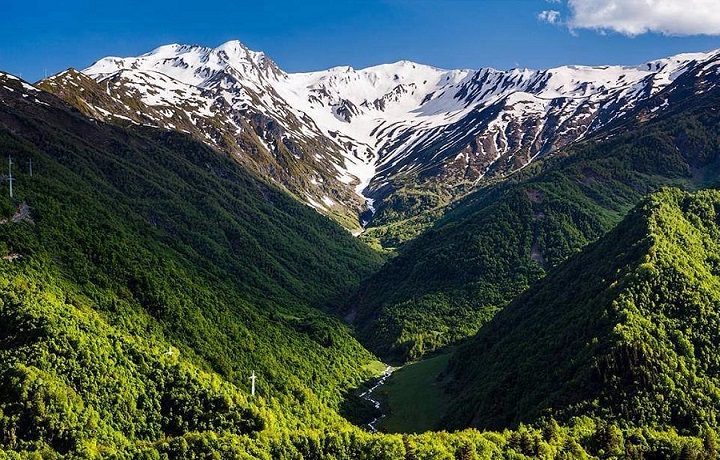





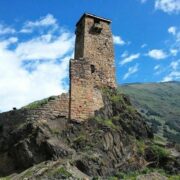

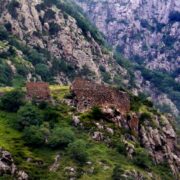
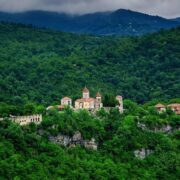

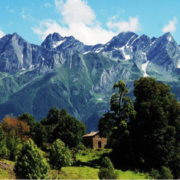

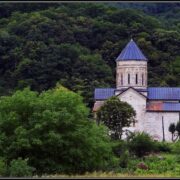

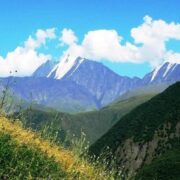


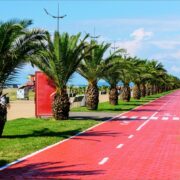

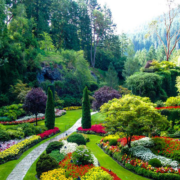
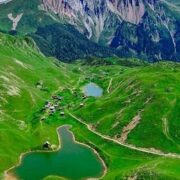

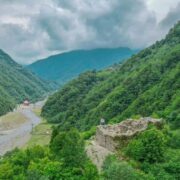
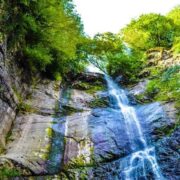






Tour Reviews
There are no reviews yet
Leave a Review